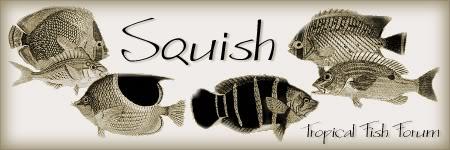Post by squish on Oct 29, 2021 21:01:30 GMT -5
Peacock Cichlid (Aulonocara) is a species of the Astatotilapia genus with as many as 22 special varieties found in nature. These species can be identified based on their elaborate pattern and color schemes.
They’re specifically known as being one of the most colorful fish to be kept and this makes them a popular choice for displaying in aquariums.
Scientific Name: Aulonocara
Family: Cichlidae
Care Level: Easy
Temperament: Semi-aggressive
Color Form: Various; typically blue
Lifespan: 8 Years
Size: 4-6″
Diet: Omnivore
Minimum Tank Size: 55 Gallons
Tank Set-Up: Freshwater: Driftwood and Caves
Compatibility: Mixed
The Peacock Cichlids elongated fins are an adaptation that allows it to swim better in Lake Malawi’s special conditions. Its elongated fins allow it to move swiftly even in hard water with relative ease and speed.
The elongated body of the fish itself allows it to better maneuver through rocky environments as efficiently as possible.
Peacock Cichlids are omnivorous by nature and have a vast array of dietary sources. They’re largely classified as bottom dwellers and tend to pick off food from the seafloor.
They can feast on herbivorous options such as seaweed and red algae as well.
Likewise, they have a predatory carnivorous tendency for smaller sea life such as crustaceans, larvae, zooplankton, and insects among other things.
The adaptive nature of the fish’s feeding habits means it can survive on various sources of nutrition. Peacock Cichlids can consume just about any food source they’re provided with, including manufactured food.
However, some exceptions do exist for them in the form of mammalian meat and tubifex worms. These are known to cause the Malawi Bloat which results in abdominal swelling and bloody ulcers with a substantial risk of death.
Typically, the Peacock Cichlid Fish varies in size from around 4 inches to 6 inches (10 to 15 cm). The Peacock Cichlid is known for having quite a variety of different colors.
Depending on the species, possible color schemes can include blue, yellow, gold, and orange. The coloring on the Peacock Cichlid’s skin is iridescent as opposed to being a fixed color shade.
The Peacock Cichlid is native to Lake Malawi of the East African Rift system. The specific nature of the Peacock Cichlid’s preference for this particular habitat makes it rarer to be found in other neighboring water bodies.
For Peacock Cichlids to thrive, they require the natural conditions of the Lake Malawi to exhibit proper growth and maturation.
These fish prefer a slightly alkaline pH that ranges anywhere from 7.5 to 9.0. A lukewarm water temperature of around 75 to 81°F (24 to 27°C) is optimal for most Peacock Cichlid species.
Peacock Cichlids tend to dwell in areas of the lake characterized by natural rubble. These rocky environments contain a considerable abundance of sand and rocks that the fish has been known to inhabit.
The high density of minerals in the Lake Malawi causes an increased level of water hardness in the areas inhabited by the fish. Peacock Cichlids are accustomed to swimming in water with a hardness of 10 to 20 dH.
They’re specifically known as being one of the most colorful fish to be kept and this makes them a popular choice for displaying in aquariums.
Scientific Name: Aulonocara
Family: Cichlidae
Care Level: Easy
Temperament: Semi-aggressive
Color Form: Various; typically blue
Lifespan: 8 Years
Size: 4-6″
Diet: Omnivore
Minimum Tank Size: 55 Gallons
Tank Set-Up: Freshwater: Driftwood and Caves
Compatibility: Mixed
The Peacock Cichlids elongated fins are an adaptation that allows it to swim better in Lake Malawi’s special conditions. Its elongated fins allow it to move swiftly even in hard water with relative ease and speed.
The elongated body of the fish itself allows it to better maneuver through rocky environments as efficiently as possible.
Peacock Cichlids are omnivorous by nature and have a vast array of dietary sources. They’re largely classified as bottom dwellers and tend to pick off food from the seafloor.
They can feast on herbivorous options such as seaweed and red algae as well.
Likewise, they have a predatory carnivorous tendency for smaller sea life such as crustaceans, larvae, zooplankton, and insects among other things.
The adaptive nature of the fish’s feeding habits means it can survive on various sources of nutrition. Peacock Cichlids can consume just about any food source they’re provided with, including manufactured food.
However, some exceptions do exist for them in the form of mammalian meat and tubifex worms. These are known to cause the Malawi Bloat which results in abdominal swelling and bloody ulcers with a substantial risk of death.
Typically, the Peacock Cichlid Fish varies in size from around 4 inches to 6 inches (10 to 15 cm). The Peacock Cichlid is known for having quite a variety of different colors.
Depending on the species, possible color schemes can include blue, yellow, gold, and orange. The coloring on the Peacock Cichlid’s skin is iridescent as opposed to being a fixed color shade.
The Peacock Cichlid is native to Lake Malawi of the East African Rift system. The specific nature of the Peacock Cichlid’s preference for this particular habitat makes it rarer to be found in other neighboring water bodies.
For Peacock Cichlids to thrive, they require the natural conditions of the Lake Malawi to exhibit proper growth and maturation.
These fish prefer a slightly alkaline pH that ranges anywhere from 7.5 to 9.0. A lukewarm water temperature of around 75 to 81°F (24 to 27°C) is optimal for most Peacock Cichlid species.
Peacock Cichlids tend to dwell in areas of the lake characterized by natural rubble. These rocky environments contain a considerable abundance of sand and rocks that the fish has been known to inhabit.
The high density of minerals in the Lake Malawi causes an increased level of water hardness in the areas inhabited by the fish. Peacock Cichlids are accustomed to swimming in water with a hardness of 10 to 20 dH.


